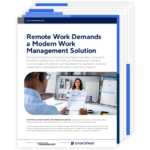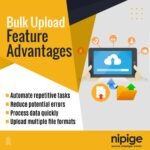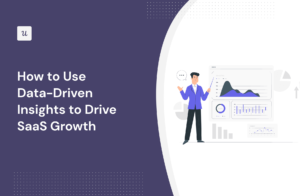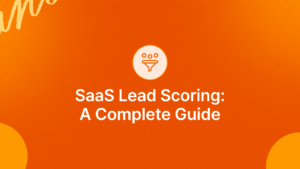Productivity software is essential for managing tasks and projects. Free and paid options each have their benefits.
Comparing free and paid productivity software helps you choose the best fit. Understanding the differences can save time and money. Free tools often offer basic features, while paid versions provide advanced options. Knowing what each type offers can guide your decision.
This blog post will explore key aspects of both free and paid productivity software. You’ll learn about their strengths and limitations. By the end, you’ll have a clearer idea of which option suits your needs best. Let’s dive into the details and find the perfect tool for you.
Features
Choosing between free and paid productivity software can be challenging. Understanding their features can help. We will compare the core features of free and paid productivity software.
Core Features Of Free Software
Free productivity software often offers essential tools to get you started. You can usually find word processing, spreadsheets, and presentation applications. Most free software supports basic formatting and editing. They also provide cloud storage options with limited space.
Free software might include:
- Basic collaboration tools
- Simple task management
- Limited integrations with other apps
These tools can suffice for many users. They help in performing daily tasks without extra costs. Yet, they might lack advanced features needed for complex projects.
Core Features Of Paid Software
Paid productivity software offers more advanced tools and features. Users get access to enhanced collaboration options. These include real-time editing and advanced sharing settings. Paid plans often come with robust task management tools and detailed project tracking.
Some key features of paid software are:
- Advanced formatting and editing tools
- Large cloud storage options
- Priority customer support
- Integration with a wide range of applications
Paid software is ideal for businesses and teams. The advanced features support complex workflows. They help in improving productivity and efficiency.
In summary, free productivity software provides essential tools. Paid versions offer advanced features for more demanding needs.
Need more clarity on Productivity? This post provides the answers you're seeking. Customizable Saas Dashboards for Team Productivity: Boost Efficiency
Cost Analysis
When choosing productivity software, cost is a key factor. Free and paid options have different cost implications. This section breaks down the cost analysis of both types.
Initial Costs
Free productivity software has no initial purchase cost. Users can download and install it without spending money. Paid software, on the other hand, requires an upfront payment. This initial cost varies by software and features offered.
Long-term Costs
Free software might seem economical, but it has hidden costs. Users may face frequent ads or limited features. Paid software often requires a subscription. This means ongoing payments. Despite this, paid options usually offer regular updates and better support. These factors contribute to their long-term value.
User Experience
The user experience is crucial when comparing free and paid productivity software. A smooth and intuitive interface can save time and reduce frustration. In this section, we’ll explore the differences in ease of use and customer support between free and paid options.
Ease Of Use
Ease of use is a key factor in productivity software. Free tools often have basic features and simpler interfaces. This makes them easier to learn and use. However, they may lack advanced functionalities that paid tools offer.
Paid productivity software usually includes more features and customization options. While this can make the software more powerful, it can also make it more complex. Some users may need time to get used to the additional features.
Consider the following comparison:
| Criteria | Free Software | Paid Software |
|---|---|---|
| Interface | Simple | Complex |
| Learning Curve | Low | Moderate to High |
| Features | Basic | Advanced |
Customer Support
Customer support is another important aspect of the user experience. Free software often relies on community forums and user guides. These resources can be helpful, but they may not provide immediate solutions.
Paid software typically offers dedicated customer support. This can include live chat, phone support, and email assistance. Users can get quick and professional help with issues.
Here’s a breakdown:
Free Software:
-
- Community forums
- User guides
- Limited direct support
Paid Software:
-
- Live chat
- Phone support
- Email assistance
Choosing between free and paid productivity software often depends on your needs and resources. A simpler tool might be enough for small tasks. For larger projects or businesses, investing in paid software could save time and provide better support.

Credit: fullcirclevt.com
Dive into Productivity and uncover valuable details in this article. Time-Blocking Techniques Using SaaS Platforms: Boost Productivity
Security
Security is a major concern when choosing productivity software. It’s crucial to know how free and paid versions protect your data. In this section, we will explore the differences in data protection between free and paid productivity software.
Data Protection In Free Software
Free software often comes with fewer security features. Developers may not invest heavily in security due to budget constraints. This can leave your data vulnerable to breaches.
Here are some common issues with data protection in free software:
- Limited Encryption: Basic or no encryption can expose your data.
- Infrequent Updates: Security patches are rare, increasing vulnerability.
- Ad-based Revenue: Your data might be used for targeted ads.
While free software can help save costs, the risk to your data’s security can be significant.
Data Protection In Paid Software
Paid software typically offers advanced security features. Companies invest more in securing their products to protect customer data.
Key security features in paid software include:
- Strong Encryption: Advanced encryption standards protect your data.
- Regular Updates: Frequent security updates minimize vulnerabilities.
- Compliance: Paid software often complies with industry standards and regulations.
Investing in paid software can provide peace of mind, knowing your data is secure.
Integration
Integration is a key aspect of productivity software. It determines how well software works with other tools and platforms. Free and paid software often differ in this regard. Let’s explore these differences.
Compatibility With Other Tools
Paid productivity software usually offers better compatibility. It integrates seamlessly with a wide range of tools. This includes email clients, project management apps, and more.
Free software, on the other hand, may have limited compatibility. It may not sync well with all tools. This can create workflow issues. Users may need workarounds to connect different apps.
Cloud Integration
Paid software often excels in cloud integration. It supports automatic backups and real-time collaboration. Users can access their data from anywhere. This is crucial for remote work.
Free productivity software may offer basic cloud features. However, advanced options might be restricted. Users could face limitations on storage or collaboration features. This can impact productivity.
Discover engaging insights on Productivity by reading this featured article. Cloud-Based Whiteboarding SaaS for Collaboration: Boost Team Productivity
Customization
Customization is a key feature in productivity software. It allows users to tailor the tools to their specific needs. This flexibility can significantly enhance efficiency and user satisfaction. But how does customization differ between free and paid productivity software?
Customization In Free Software
Free productivity software often offers basic customization options. Users can change themes or layouts. They can set preferences for notifications or task lists. Some apps allow adding widgets or extensions. The level of customization is usually limited. Advanced features often require an upgrade to the paid version. Despite these limits, free tools can still be very useful for simple tasks.
Customization In Paid Software
Paid productivity software typically offers extensive customization. Users can modify almost every aspect of the tool. They can integrate with other software for a seamless workflow. Advanced settings allow for personalized user experiences. Many paid apps offer custom templates and automation features. This can save time and improve efficiency. The higher level of control in paid software can justify the cost for many users.
Frequently Asked Questions
What Are The Main Differences Between Free And Paid Productivity Software?
Free productivity software often lacks advanced features found in paid versions. Paid software usually offers better customer support, enhanced security, and more frequent updates.
Is Free Productivity Software Reliable?
Yes, many free productivity software options are reliable. However, they may have limitations in features and customer support compared to paid versions.
Can Free Productivity Software Boost Productivity?
Free productivity software can boost productivity. However, it might lack advanced features that paid versions offer, affecting efficiency for some tasks.
Are There Hidden Costs In Free Productivity Software?
Some free productivity software may have hidden costs. These can include in-app purchases, ads, or limited functionality that requires upgrades.
Conclusion
Choosing between free and paid productivity software depends on your needs. Free tools offer basic features and save money. Paid software provides advanced functions and better support. Evaluate your tasks and budget carefully. Consider long-term benefits and drawbacks. Both options have strengths.
The right choice enhances your productivity.











